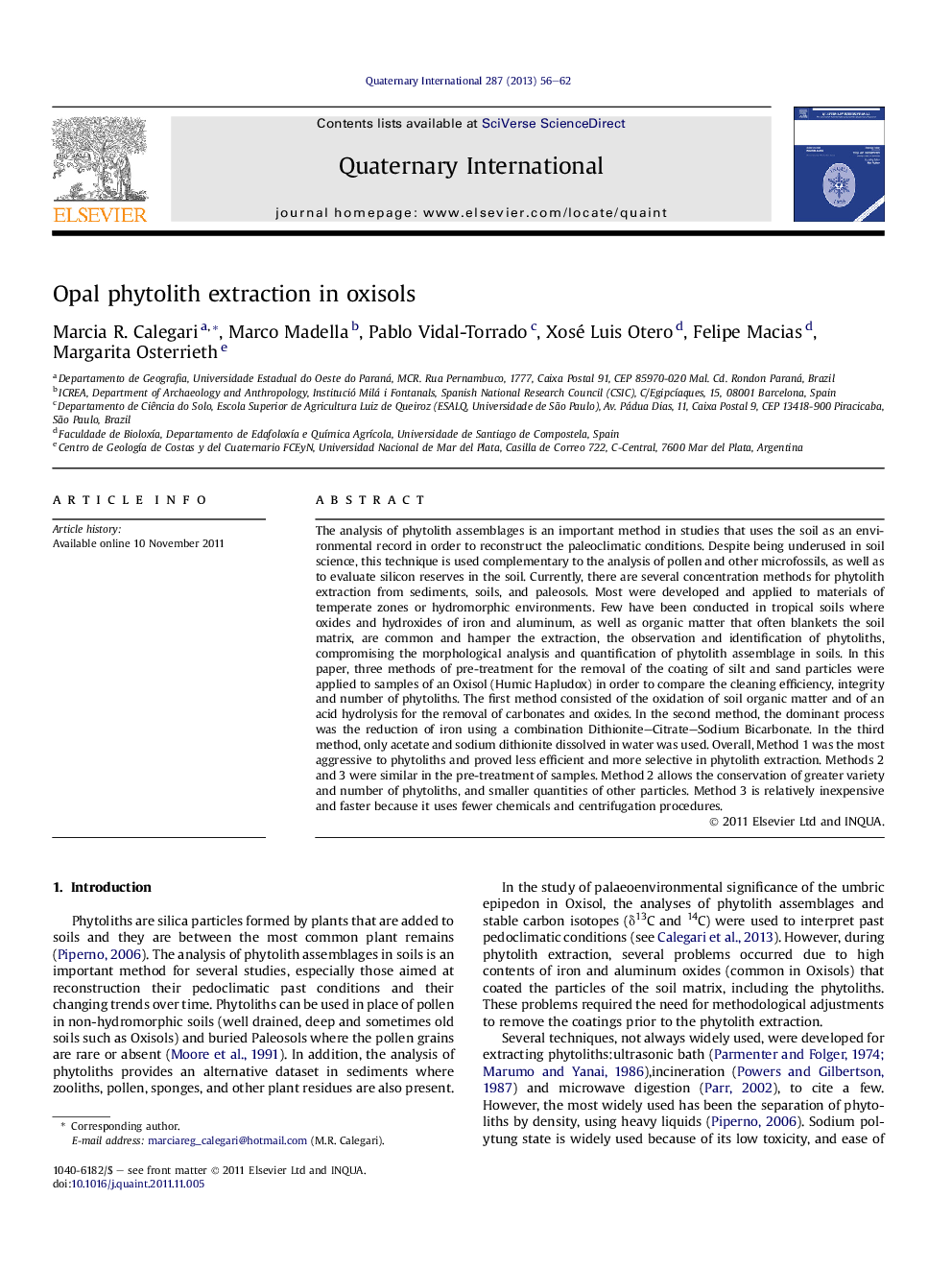| کد مقاله | کد نشریه | سال انتشار | مقاله انگلیسی | نسخه تمام متن |
|---|---|---|---|---|
| 1042513 | 1484201 | 2013 | 7 صفحه PDF | دانلود رایگان |

The analysis of phytolith assemblages is an important method in studies that uses the soil as an environmental record in order to reconstruct the paleoclimatic conditions. Despite being underused in soil science, this technique is used complementary to the analysis of pollen and other microfossils, as well as to evaluate silicon reserves in the soil. Currently, there are several concentration methods for phytolith extraction from sediments, soils, and paleosols. Most were developed and applied to materials of temperate zones or hydromorphic environments. Few have been conducted in tropical soils where oxides and hydroxides of iron and aluminum, as well as organic matter that often blankets the soil matrix, are common and hamper the extraction, the observation and identification of phytoliths, compromising the morphological analysis and quantification of phytolith assemblage in soils. In this paper, three methods of pre-treatment for the removal of the coating of silt and sand particles were applied to samples of an Oxisol (Humic Hapludox) in order to compare the cleaning efficiency, integrity and number of phytoliths. The first method consisted of the oxidation of soil organic matter and of an acid hydrolysis for the removal of carbonates and oxides. In the second method, the dominant process was the reduction of iron using a combination Dithionite–Citrate–Sodium Bicarbonate. In the third method, only acetate and sodium dithionite dissolved in water was used. Overall, Method 1 was the most aggressive to phytoliths and proved less efficient and more selective in phytolith extraction. Methods 2 and 3 were similar in the pre-treatment of samples. Method 2 allows the conservation of greater variety and number of phytoliths, and smaller quantities of other particles. Method 3 is relatively inexpensive and faster because it uses fewer chemicals and centrifugation procedures.
Journal: Quaternary International - Volume 287, 21 February 2013, Pages 56–62